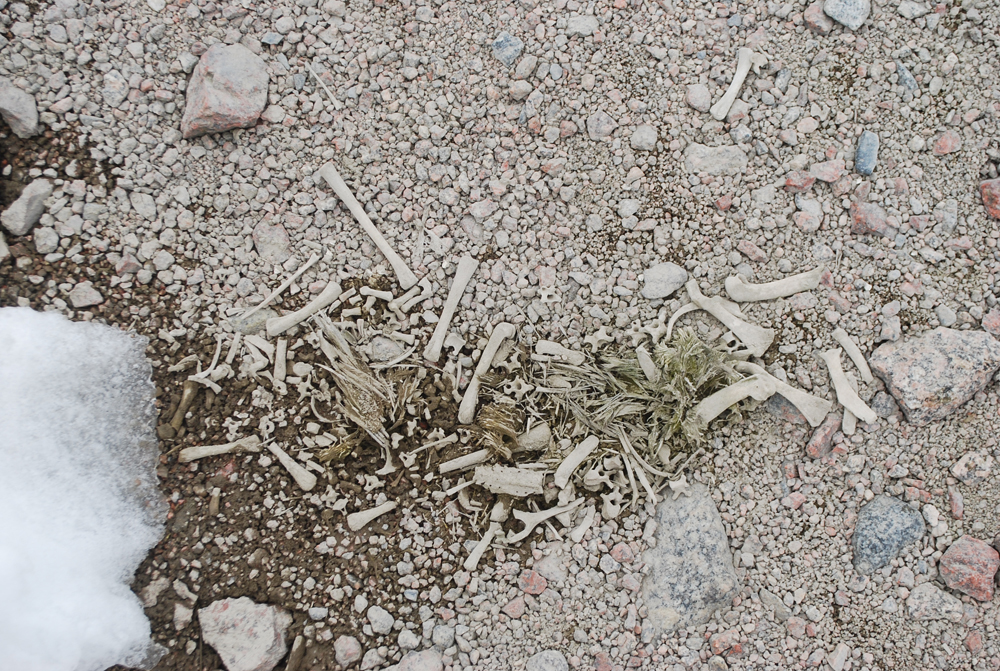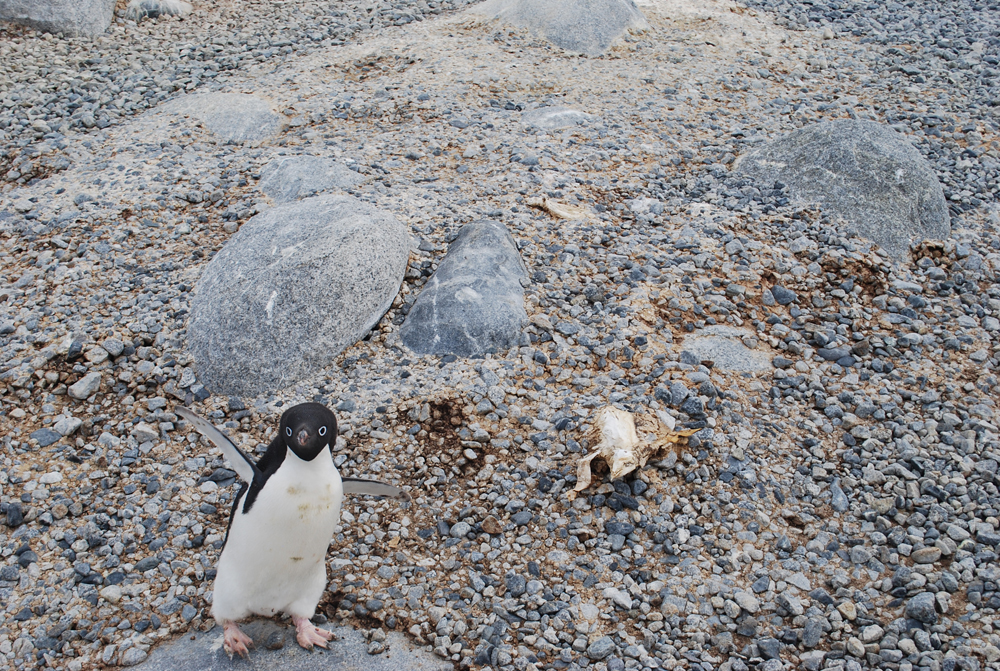Dozens of ancient penguin 'mummies' discovered at lost nesting site in Antarctica
The ancient remains appeared fresh and new, biologist Steve Emslie said.

On a dry, windy cape in southern Antarctica, the ground is strewn with dead, mummified penguins. The rocks around them are littered with bones, pebbles and guano stains — the telltale marks of a freshly abandoned Adélie penguin colony.
Scenes like this are common around Antarctica's Ross Sea, which is home to millions of Adélies and other thriving penguin populations. Still, the sight at Cape Irizar puzzled biologist Steve Emslie, a professor at the University of North Carolina, Wilmington, when he visited in January 2016; he knew that Adélie penguins hadn't been spotted there in hundreds of years. Where had the remains of this ghostly colony suddenly materialized from?
Now, in a study published Sept. 18 in the journal Geology, Emslie offers an answer. A radiocarbon analysis of bones, eggshells and mummified skin samples collected at the site reveals that the seemingly fresh penguin remains at Cape Irizar are actually hundreds to thousands of years old. According to Emslie, the site has been occupied by breeding penguin colonies at least three times over the past 5,000 years, but the dessicated evidence of those occupations only just came to light, thanks to increasingly rapid snowmelt during Antarctica's ever-hotter summers.
Related: In photos: The emperor penguin's beautiful and extreme breeding season
"In all the years I've been working in the Antarctic, I've never seen a site like this before," Emslie told Live Science. "Mummies won't last on the surface in this windy area unless they've just been exposed."
Melting away the past
Antarctica — and especially the Antarctic Peninsula, on the northern tip of the continent — is one of the fastest-warming regions on Earth. When Emslie visited King George Island, just north of the peninsula, 10 years ago, he was astonished by the melt he saw.
"Just millions and millions of gallons of freshwater pouring into the ocean every day, just from one ice cap," Emslie said. "It's sad what's happening there."
Get the world’s most fascinating discoveries delivered straight to your inbox.
Cape Irizar, deep in southern Antarctica along the frigid Ross Sea, is different. Average temperatures are much colder there, Emslie said, and global warming in the region has been less severe. Within the last decade, however, "streamlets" of meltwater have begun flowing from nearby glaciers, flushing away snow cover and exposing the rocky ground beneath, Emslie said.
That recent melting is what exposed the long-lost Adélie penguin nests, Emslie wrote in his study. During his 2016 trip to the cape, he saw several mummified penguin chicks — withered and preserved by the dry air — sitting plainly on the ground at Cape Irizar. Mummies like these are a common sight at nesting sites in the area, Emslie said, but they don't last long in the windy air before collapsing. The mummies at Cape Irizar looked fresh, as did guano stains (penguin poop) scattered around the area. Nearby, large collections of pebbles had formed mounds — a common Adélie nesting behavior.
"The fresh remains on the surface looked like a modern colony. But no penguins have been recorded breeding there in historic times," Emslie said.
On a subsequent trip, Emslie and his colleagues excavated three of those newly-exposed pebble mounds, revealing dozens of chick bones and other remains. The researchers determined the age of these nests by analyzing the radioactive decay of an isotope, or version, of carbon within seven of those bones, plus a handful of eggshells, feathers and skin samples.
That radiocarbon dating confirmed what Emslie had expected: The seemingly fresh penguin remains were actually ancient, ranging from 800 to 5,000 years old. The samples showed evidence of at least three different penguin "occupations" at the Cape Irizar site, the last one ending nearly a millennium ago.
"The latest occupation was the one on the surface," Emslie said. The remains of this colony were likely "covered by snow and ice, beginning during the Little Ice Age about 800 years ago," before finally being exposed by recent summer melt.
'Winners and losers'
According to Emslie, the past penguin occupations were likely tied to warm periods when nearby "fast ice" — or slabs of sea ice attached to the land — melted early in the summer, opening water access to the cape during Adélie breeding season. Penguins could have simply swam up to the cape and built nests on the beaches, Emslie said.
Today, fast ice around Cape Irizar melts too late in the season to make the area a viable nesting site. But that will probably change in the near future, Emslie said. As fast ice melts earlier each year in response to global warming, penguins will have more and more time to colonize the cape and start their breeding cycles. That's a good thing for the Adélie penguins of southern Antarctica; — but their northern cousins, which are rapidly losing their sea-ice habitats, will not fare so well.
"We talk about climate change 'winners and losers,'" Emslie said, referring to species that will either expand their populations because of climate change (winners) or be pushed toward extinction (losers). "Adélie penguins have the unique position of being both. While we see them declining in the Antarctic Peninsula, they're expanding or staying stable in East Antarctica and the Ross Sea."
The discovery of these ancient colonies is a reminder that penguins have been moving around Antarctica for millennia, Emslie said, migrating from cape to cape as sea ice ebbs and flows. But now, their habitat is changing more rapidly than ever before.
As warming escalates, the millions of penguins living in the northern Antarctic Peninsula may disappear in the next 20 years, he said, and Cape Irizar may once again become prime penguin property. Digging deeper into the cape and studying more remains of the ancient colonies that once lived there could provide a better clue of what's in store for the Adélies.
Originally published on Live Science.

Brandon is the space / physics editor at Live Science. With more than 20 years of editorial experience, his writing has appeared in The Washington Post, Reader's Digest, CBS.com, the Richard Dawkins Foundation website and other outlets. He holds a bachelor's degree in creative writing from the University of Arizona, with minors in journalism and media arts. His interests include black holes, asteroids and comets, and the search for extraterrestrial life.




